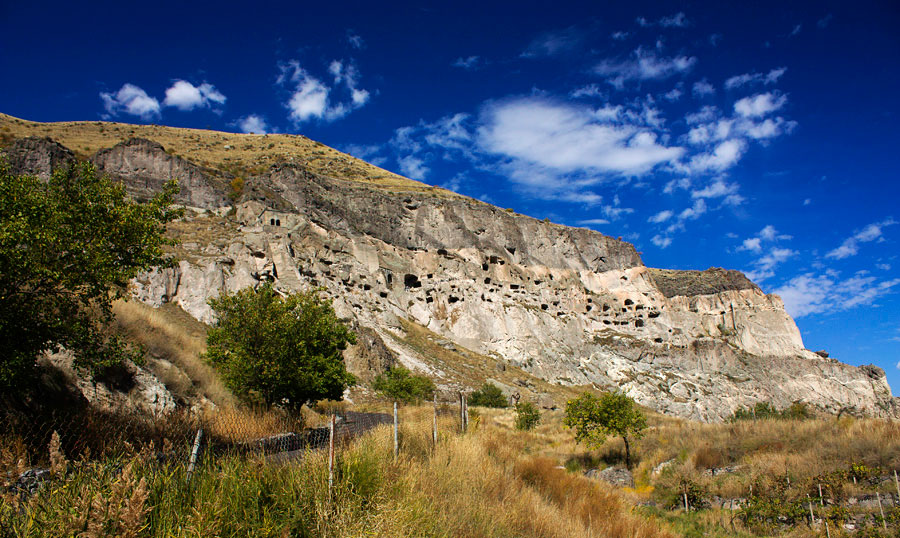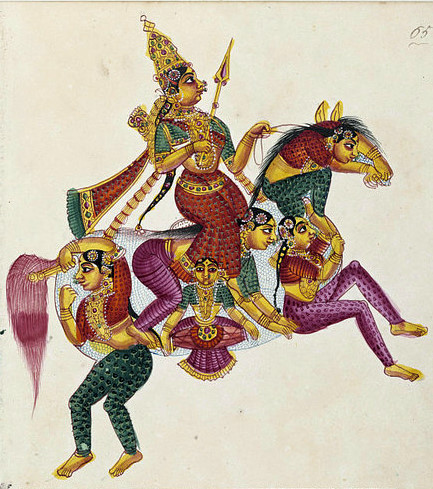|
Surameli
The Surameli ( ka, სურამელი; pl. სურამელები, ''suramelebi'') were a noble family in the medieval Kingdom of Georgia, with notable members from the 12th century to the 14th. At the height of their influence and prestige in the 13th century, the Surameli were hereditary ''eristavi'' ("duke") of Kartli and ''msakhurt-ukhutsesi'' ("Lord High Chamberlain") of Georgia. Origin The origin of the Surameli family has not been fully elucidated. Their surname derives from a territorial epithet, meaning "of/from Surami", a castle in the central Georgian province of Shida Kartli. Based on similarities in personal names and titles, the 19th-century French Orientalist Marie-Félicité Brosset identified the Surameli of the Georgian annals as possible members of the house of Orbeli. This hypothesis has been accepted by Cyril Toumanoff, who considers the "Orbelianis of Surami" as the cousins of those Orbeli who, exiled by George III of Georgia in 1177, later estab ... [...More Info...] [...Related Items...] OR: [Wikipedia] [Google] [Baidu] |
David VIII Of Georgia
David VIII ( Georgian: დავით VIII; 1273–1311), from the Bagrationi dynasty, was King of Georgia in 1292–1302 and 1308-1311. Eldest son of Demetre II the Self-sacrificing by his Trapezuntine wife, he was appointed by the Ilkhan ruler Gaikhatu as king of Georgia as reward for his military service during the Rümelian uprising in 1293. Succeeding his cousin Vakhtang II, David's rule actually extended only over the eastern part of the kingdom, whereas western Georgia had been under the Imeretian branch of the House of Bagrationi since 1259. In 1295, he supported Baidu Khan in an internal conflict in the Ilkhanate. However, Baidu was killed and Ghazan became a khan. Ghazan ordered the Georgian king to arrive to his capital Tabriz. Remembering the fate of his father, David refused to comply and began preparations for war. Ghazan Khan responded with a punitive expedition, and ravaged the country. Supported by the Mongols, Ossetes attacked Shida Kartli province ... [...More Info...] [...Related Items...] OR: [Wikipedia] [Google] [Baidu] |
List Of Georgian Consorts
This is a list of the royal consorts of Georgia from –20 February 1810. Queen consort of the Kingdom of Iberia (302 BC–580) Queen consort of the Principality of Iberia (580–1008) Queen consort or King consort of the Kingdom of Georgia (1008–1490) Georgia split into three independent kingdoms by 1490. The Kings of Kartli were descendants of Constantine II, the Kings of Kakheti from George VIII and the Kings of Imereti from Bagrat VI. Queen consort of the Kingdom of Kartli (1484–1762) Upon Teimuraz II's death, Kartli and Kakheti were united once more with the exception of Imereti. Queen consort of the Kingdom of Kakheti (1490–1762) Upon Teimuraz II's death, Kartli and Kakheti were united once more with the exception of Imereti. Queen consort of the Kingdom of Kartli-Kakheti (1762–1801) In 1762, the Kingdom of Kartli and the Kingdom of Kakheti were united under one ruler. Annexation of Kakheti and Kartli to Russia by Paul I of Russia, 1801. Queen consort of t ... [...More Info...] [...Related Items...] OR: [Wikipedia] [Google] [Baidu] |
Vardzia
Vardzia ( ka, ვარძია ) is a cave monastery site in southern Georgia (country), Georgia, Rock cut architecture, excavated from the slopes of the Erusheti Mountain on the left bank of the Kura (Caspian Sea), Kura River, thirty kilometres from Aspindza. The main period of construction was the second half of the twelfth century. The caves stretch along the cliff for some five hundred meters and in up to nineteen tiers. The monastery was an important cultural center, a place of significant literary and artistic work. The Church of the Dormition of the Theotokos, Dormition, dating to the 1180s during the golden age of Tamar of Georgia, Tamar and Shota Rustaveli, Rustaveli, has an important series of Mural, wall paintings. The site was largely abandoned after the History of Georgia (country)#Ottoman and Persian domination, Ottoman takeover in the sixteenth century. Now part of a state heritage reserve, the extended area of Vardzia-Khertvisi has been submitted for future inscr ... [...More Info...] [...Related Items...] OR: [Wikipedia] [Google] [Baidu] |
Surami
Surami ( ka, სურამი) is a small town ('' daba'') in Georgia’s Shida Kartli region with the population of 7,492. It is a popular mountain climatic resort and a home to a medieval fortress. Location Surami is located on the southern slopes of the Likhi Range (alternatively known as the Surami Range) which divides Georgia into its eastern and western parts, four km from the town Khashuri, to which Surami is connected through a railway spur. History The first human settlement on Surami's territory dates back to the early Bronze Age. It is probably the Surium of Classical authors, specifically Pliny the Elder ( AD 23-79), who place it in the eastern part of Colchis, towards Iberia. Strategically located at the entrance into the Borjomi Gorge and guarding the road from eastern to western Georgia, Surami became a heavily fortified town in the 12th century. From the 1170s to the latter part of the 14th century, the fortress of Surami was a hereditary fief of the d ... [...More Info...] [...Related Items...] OR: [Wikipedia] [Google] [Baidu] |
Plural
The plural (sometimes list of glossing abbreviations, abbreviated pl., pl, or ), in many languages, is one of the values of the grammatical number, grammatical category of number. The plural of a noun typically denotes a quantity greater than the default quantity represented by that noun. This default quantity is most commonly one (a form that represents this default quantity of one is said to be of ''Grammatical number, singular'' number). Therefore, plurals most typically denote two or more of something, although they may also denote fractional, zero or negative amounts. An example of a plural is the English word ''cats'', which corresponds to the singular ''cat''. Words of other types, such as verbs, adjectives and pronouns, also frequently have distinct plural forms, which are used in agreement (linguistics), agreement with the number of their associated nouns. Some languages also have a dual (grammatical number), dual (denoting exactly two of something) or other systems of n ... [...More Info...] [...Related Items...] OR: [Wikipedia] [Google] [Baidu] |
Shaddadids
The Shaddadids were a Kurdish Sunni Muslim dynasty. who ruled in various parts of Armenia and Arran from 951 to 1199 AD. They were established in Dvin. Through their long tenure in Armenia, they often intermarried with the Bagratuni royal family of Armenia. They began ruling in the city of Dvin, and eventually ruled other major cities, such as Barda and Ganja. A cadet line of the Shaddadids were given the cities of Ani and Tbilisi as a reward for their service to the Seljuqs, to whom they became vassals. From 1047 to 1057, the Shaddadids were engaged in several wars against the Byzantine army. The area between the rivers Kura and Aras was ruled by a Shaddadid dynasty. Kurdish rulers History Shaddadids of Dvin and Ganja In 951, Muhammad established himself at Dvin. Unable to hold Dvin against Musafirid incursion, he fled to the Armenian Kingdom of Vaspurakan. His son, Lashkari I, ended Musafirid influence in Arran by taking Ganja in 971. He later expanded into Trans ... [...More Info...] [...Related Items...] OR: [Wikipedia] [Google] [Baidu] |
Tamar Of Georgia
Tamar the Great ( ka, თამარ მეფე, tr, Literal translation, lit. "King Tamar") ( 1160 – 18 January 1213) queen regnant, reigned as the List of monarchs of Georgia#Kings of unified Georgia (1008–1490), Queen of Kingdom of Georgia, Georgia from 1184 to 1213, presiding over the apex of the Georgian Golden Age. A member of the Bagrationi dynasty, her position as the first woman to rule Georgia in her own right was emphasized by the title ''Mepe (title), mepe'' ("king"), afforded to Tamar in the medieval Georgian sources. Tamar was proclaimed heir and Coregency, co-ruler by her reigning father George III of Georgia, George III in 1178, but she faced significant opposition from the aristocracy upon her ascension to full ruling powers after George's death. Tamar was successful in neutralizing this opposition and embarked on an energetic foreign policy aided by the decline of the hostile Seljuk Empire, Seljuq Turks. Relying on a powerful military elite, Tamar was ... [...More Info...] [...Related Items...] OR: [Wikipedia] [Google] [Baidu] |
Kvatakhevi
Kvatakhevi ( ka, ქვათახევი) is a medieval Georgian Orthodox monastery in Shida Kartli, Georgia, west of the nation’s capital of Tbilisi. The Kvatakhevi monastic complex is situated near the village Kavtiskhevi at the end of the gorge cut by a stream in the northern slopes of the Trialeti Range, protected on three sides by the steep mountain slopes. It dates to the 12th-13th century, and resembles the monasteries of Betania, Pitareti, and Timotesubani in its architectural form and decoration, reflecting a contemporary canon of a Georgian domed church architecture. The overall plan is nearly a square, with the dome resting upon 2 freely standing pillars and 2 pillars fused with the ledges of the altar. The internal space of the church is formed by the arms of the cross and the dome which surmounts the crossing point. The building has two portals, one to the south and one to the west. The façades are covered with finely hewn white stone squares. The decorati ... [...More Info...] [...Related Items...] OR: [Wikipedia] [Google] [Baidu] |
Rati Surameli
Rati ( sa, रति, ) is the Hindu goddess of love, carnal desire, lust, passion, and sexual pleasure. Usually described as the daughter of ''Prajapati'' Daksha, Rati is the female counterpart, the chief consort and the assistant of Kama (Kamadeva), the god of love. A constant companion of Kama, she is often depicted with him in legend and temple sculpture. She also enjoys worship along with Kama. The Hindu scriptures stress Rati's beauty and sensuality. They depict her as a maiden who has the power to enchant the God of Love. When the deity Shiva burns her husband to ashes, it is Rati, whose beseeching or penance, leads to the promise of Kama's resurrection. Often, this resurrection occurs when Kama is reborn as Pradyumna, the son of Krishna and Rukmini. Rati – under the name of Mayavati – plays a critical role in the upbringing of Pradyumna, who is separated from his parents at birth. She acts as his nanny, as well as his lover, and tells him the way to return to his pa ... [...More Info...] [...Related Items...] OR: [Wikipedia] [Google] [Baidu] |
George VII Of Georgia
George VII (Georgian: გიორგი VII) (died 1405 or 1407) was king of Georgia from 1393 to 1407 (alternatively, from 1395 to 1405). George was the son of the king Bagrat V and his first wife Elene of Trebizond (died of bubonic plague, 1366). Bagrat appointed him co-ruler in 1369. In November 1386, King Bagrat was defeated and taken prisoner by the Turco-Mongol warlord Timur (or Tamerlane). Prince George organized a successful resistance to the next incursion and released his father. In 1393, Bagrat died and George assumed full royal powers. He spent most of his reign fighting Timur who led seven more expeditions against the stubborn Georgian kingdom from 1387 to 1403, leaving the country in ruins. Finally, in 1403 George had to make peace with the fierce enemy, recognising Timur as a suzerain and paying him tribute, but retaining the right to be crowned as a Christian monarch. He was killed in battle against the Turkmen nomads, apparently of the Kara Koyunlu clan. Ge ... [...More Info...] [...Related Items...] OR: [Wikipedia] [Google] [Baidu] |
.png)


